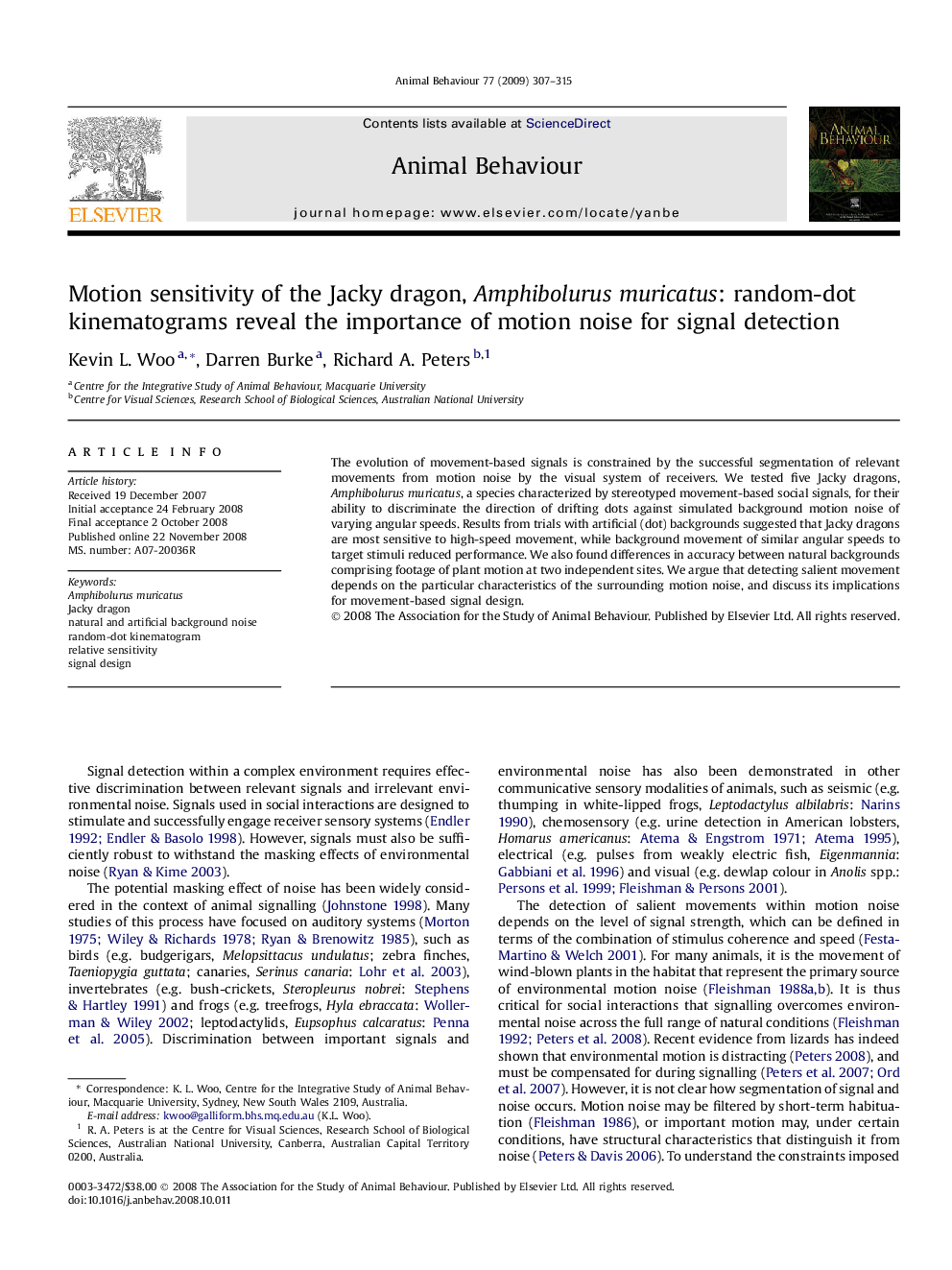| Article ID | Journal | Published Year | Pages | File Type |
|---|---|---|---|---|
| 2418151 | Animal Behaviour | 2009 | 9 Pages |
The evolution of movement-based signals is constrained by the successful segmentation of relevant movements from motion noise by the visual system of receivers. We tested five Jacky dragons, Amphibolurus muricatus, a species characterized by stereotyped movement-based social signals, for their ability to discriminate the direction of drifting dots against simulated background motion noise of varying angular speeds. Results from trials with artificial (dot) backgrounds suggested that Jacky dragons are most sensitive to high-speed movement, while background movement of similar angular speeds to target stimuli reduced performance. We also found differences in accuracy between natural backgrounds comprising footage of plant motion at two independent sites. We argue that detecting salient movement depends on the particular characteristics of the surrounding motion noise, and discuss its implications for movement-based signal design.
